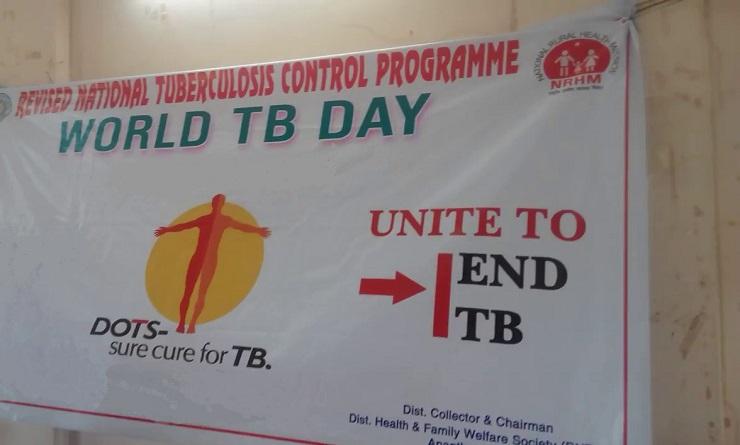ASIACALLING
Tuberculosis a national health emergency in India
"India is home to the largest number of tuberculosis, or TB, patients worldwide. "

India is home to the largest number of tuberculosis, or TB, patients worldwide.
An estimated 3 million people are believed to be suffering from the disease. But some recent studies suggest the real figures could be much more severe.
Bismillah Geelani has the story from New Delhi.
Fifty five year old Sarla Devi lives with her 5 children in a small two-room shanty on the outskirts of Delhi.
Her husband, a tailor, died of TB two years ago.
Sarla Devi says he didn’t have the patience for the long-term treatment and didn’t want to be treated at the government hospital.
“So I took him to a private clinic where he was prescribed medicine and within two months his condition improved,” says Sarla, “But he was getting so frustrated with taking a number of tablets every day that he would often refuse to take the medicine, at times he would throw them away in anger and then he also started drinking again.”
Her husband’s fever worsened and he passed away. Then two months later, Sarla Devi’s 20-year-old daughter and 15-year-old son were also diagnosed with TB.
Sarla Devi is doing her best to ensure her children complete their treatment, but her son is already showing signs of intolerance to the highly toxic TB drugs.
“He is taking medicines but it seems it is all getting complicated,” she says, “He is growing anxious and keeps crying all the time. The medicine does not suit him. It is very hard for him.”
Tuberculosis is an airborne disease caused by a bacteria called mycobacterium tuberculosis. It usually attacks the lungs but can also affect other parts of the body.
Aruna Bhattacharya, Associate Professor at the Public Health Foundation of India, says many patients neglect the early indicators and end up worsening their own condition.
“A lot of its symptoms are misleading; I’m coughing, everybody coughs, I’m having fevered condition in the night-low grade fever, everybody has,” she says, “It is a long-term slow disease and if we miss those symptoms then we end up having a proper full blown TB case. And because it’s a communicable disease any symptoms missed or not taken care of is multiplying many more patients.”
According to the United Nations, India has the highest number of TB cases globally.
Official estimates put the number of patients in India between 2 and 3 million, of which more than 200,000 die every year.
But a recent study by the London-based Imperial College showed the actual figure could be three times higher.
Some Indian researchers like, Dr. Zari Adwadiya, argue that even that might be a low estimate.
“What is important to remember here is that these figures do not include the patients who get treatment in the private sector,” explains Dr. Zari, “Study upon study over the years has established that 70 percent of the patients go to the private clinics for treatment. So if we take everything into consideration the actual number would be anywhere between 5 to 10 times more.”
Factors like widespread poverty, high population density, lack of proper sanitation and hygiene, and high incidence of HIV/AIDS make India a perfect breeding ground for the TB bacteria.
In recent years the government has taken some measures to address the issue, including a public awareness campaign about the early symptoms of the disease, diagnostic centers and free treatment facilities for those affected.
Health Minister J P Nadda explains.
“We have RNTCPA or Revised National Tuberculosis Control Program. First of all timely detection, and number 2, taking medication till the end,” she says, “We have started a DOT program also, that is, Directly Observed Treatment, where the patient is asked to come to the Prime Health Centre or medical institution and they are given the medicine in front of the health official so that we monitor and see to it that the patient is taking medicine.”
While these initiatives have been applauded for reducing the mortality rate, critics say they have a limited reach and no effect on newer forms of disease, which are drug resistant.
Last year at the World Health Assembly, governments across the world agreed on an ambitious End TB Global Strategy.
The strategy aims to reduce TB deaths by 95% and cut new cases by 90% by 2035.
Nata Manabde, former India Representative of the World Health Organization (WHO) says India needs to do much more to be able to achieve the goal.
“We are badly in need of new vaccines, we are badly in need of new diagnostics, we are badly in need of faster treatment regimens,” says Nata, “And all that requires research, and unless political prioritization is given to this epidemic in India I would say it is sufficiently big to call it as a national health emergency for the coming years, and to pool the resources to tackle it.”
- Bismillah Geelani
- tuberculosis
- India
Komentar (0)
KBR percaya pembaca situs ini adalah orang-orang yang cerdas dan terpelajar. Karena itu mari kita gunakan kata-kata yang santun di dalam kolom komentar ini. Kalimat yang sopan, menjauhi prasangka SARA (suku, agama, ras dan antargolongan), pasti akan lebih didengar. Yuk, kita praktikkan!